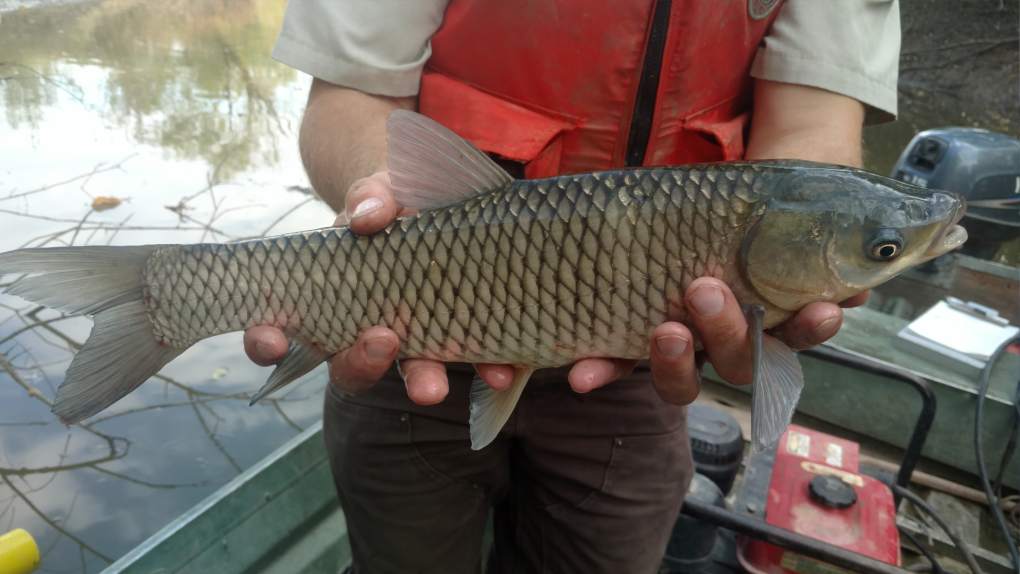‘Immediate threat to Canadian waters’: Here’s what the Invasive Species Centre wants you to know about grass carp

Researchers have found evidence of naturally reproducing invasive fish species in the Great Lakes, causing an “immediate threat to Canadian waters,” says the Invasive Species Centre (ISC).
Grass carp was found in the Sandusky and Maumee rivers, both tributaries of Lake Erie on the U.S. side, said the ISC in a news release on Thursday.
The threat to our waters is primarily due to the proximity of the lakes, connecting the east-central interior of North America to the Atlantic Ocean. From the interior to the outlet at the Saint Lawrence River, water flows from Superior to Huron and Michigan, southward to Erie, and finally northward to Lake Ontario.
“This puts them striking distance to the Canadian waters of the Great Lakes and makes them an immediate threat,” read the release.
Biodiversity and activities like recreational fishing would be negatively impacted, the centre notes.
“Grass carp can reduce wetland vegetation by up to 50 per cent due to their ability to eat almost half of their body weight a day in aquatic weeds. This would cause high impacts to a predicted 33 fish species in the Great Lakes at including Walleye, Smallmouth Bass, Muskey, and others.The Canadian recreational fishing industry is valued at $556 million USD.”
The ISC held an information session — The Grass Carp Information Session — on Thursday in Belleville, Ont. to discuss the issue and what is being done about it, including information on the recent fertile female captured in the Bay of Quinte this past summer.
The session included information booths from the Invasive Species Centre, the Federation of Ontario Cottagers Association, Ontario Federation of Anglers and Hunters, the Department of Fisheries and Oceans Canada, Blue Fish Canada, the Ministry of Natural Resources and Forestry and the Fish’n Canada Show,” the ISC said in the release.
View original article here Source









